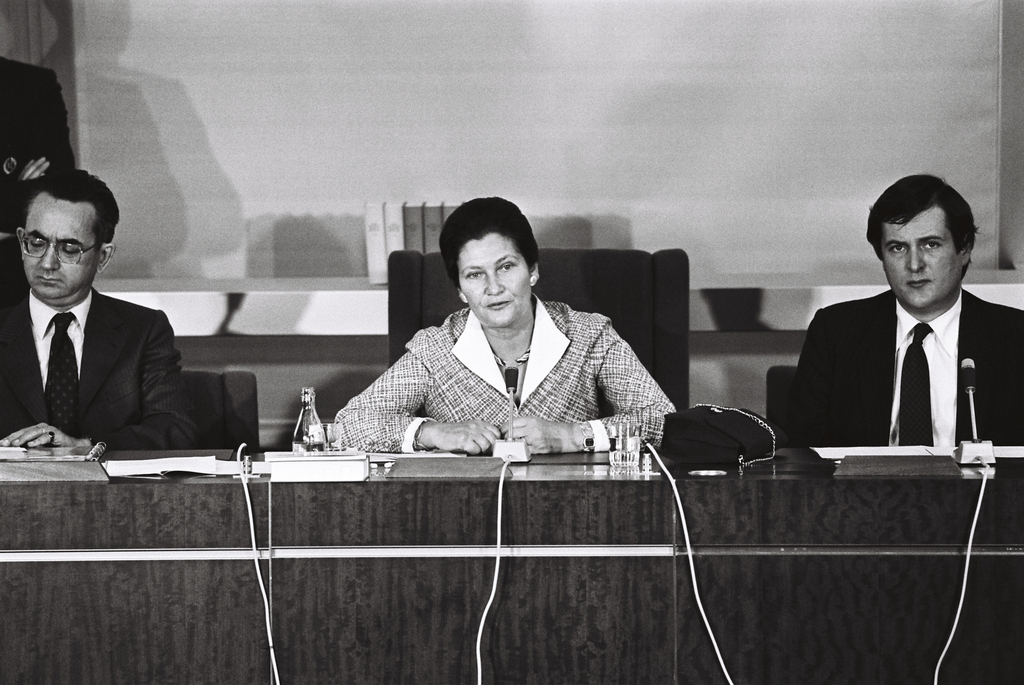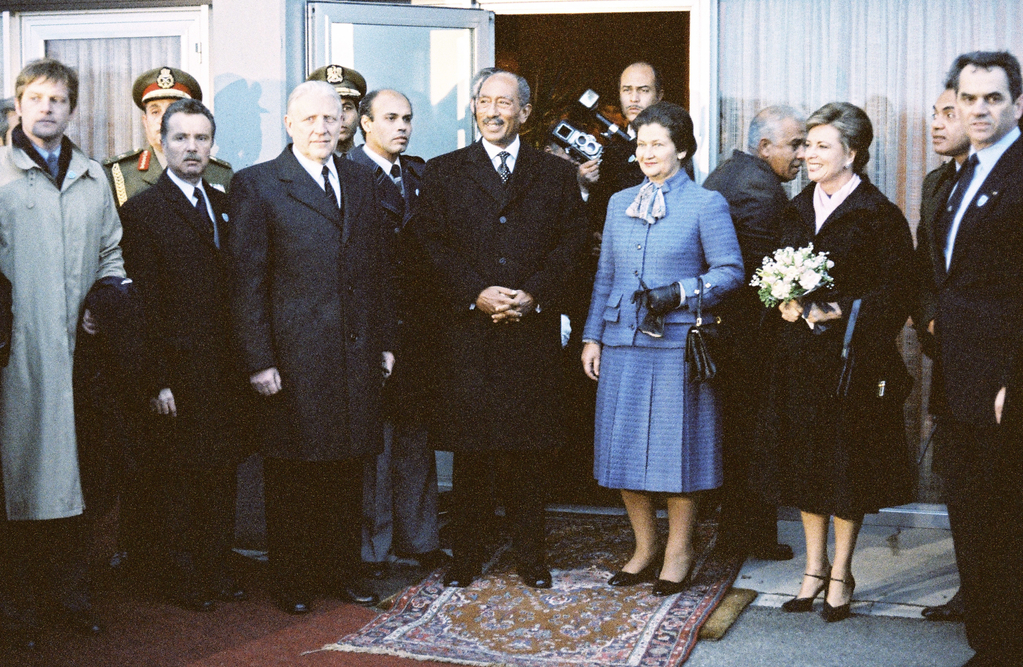Biography
Simone Veil was born on 13 July 1927 in Nice, Alpes-Maritimes, France. In March 1944, Veil was deported to Auschwitz before being moved to Bergen-Belsen where she was interned until January 1945. She then returned to Paris where she studied law, graduating from the Institut d'études politiques in Paris. In 1956, she took the entrance exams for the French judiciary and then joined the Ministry of Justice. She entered politics in 1969, joining the private office of René Pleven, the Minister of Justice. Ten years later, in 1979, Veil became the first woman president of the European Parliament. She supported a large number of European associations, such as the European Fund for Freedom of Expression and the Foundation for Science and Culture in Europe, of which she was the honorary president. On the 20th of November 2008, she was elected a member of the Académie Française.
She passed away on 30 June 2017.
Political posts held
- 1974-1979: French Minister of Health, Social Security and the Family
- 1979-1993: Member of the European Parliament (Liberal and Democratic Group, which became the Liberal, Democratic and Reform Group)
- 1979-1982: President of the European Parliament
- 1982-1984: Chair of the Legal Affairs Committee
- 1984-1986, 1989-1992: Member of the Committee on Environment, Public Health and Consumer Protection
- 1986 and 1990-1992: Member of the Political Affairs Committee
- 1992-1993: Member of the Committee on Foreign Affairs and Security and of the Sub-committee on Human Rights
- 1993-1995: French Minister for Social Affairs, Health and Cities. First woman to hold a senior ministerial post in France
- 1998-2007: Member of the Constitutional Council, France
What's in the Archives
The Fonds of the Office of Simone Veil hold over 2,700 files containing more than 19,000 items.
Papers from Simone Veil's Office during her time as President are classified by her Office's areas of activity and include the papers of her three predecessors (Cornelis Berkhouwer, Georges Spénale and Emilio Colombo).
President Veil's documents are included in the following four series:
Public Figure
PE1 P1 100/PERS
This group of series is made up of six series on subjects relating to the President as a public figure. The largest series are those relating to sponsorships and events, media image, defence of human rights and assistance to private individuals.
Presidency of Parliament
PE1 P1 200/PRES
This group of series is made up of eight series relating to the President's political duties. The first series, 'Exercise of the presidency', refers to the President's activities during Strasbourg part-sessions and also to her relations with the Bureau and the enlarged Bureau. This series also reflects the various events and meetings that punctuated Veil's term of office, such as hearings and courtesy visits, receptions of prominent personalities and official visits. The four following series cover the President's various relations: interinstitutional (Council, Commission and other Community bodies), interparliamentary (Member States and third countries), external (Member States, third countries, international organisations, European movements, etc.), with the press, and with citizens (requests for jobs, for subsidies, appeals and activities in defence of human rights, etc.).
The next, particularly large series contains documents concerning relations with some of the European Parliament's political bodies such as the College of Quaestors, parliamentary committees and delegations, political groups, the Staff Committee and the unions. The final series relates more specifically to Simone Veil's Office, chiefly from the point of view of its organisation, functioning, and mail (filed chronologically).
Secretariat of Parliament
PE1 P1 300/SECR
This group of series presents documents relating to the administrative and legal duties of the President's Office, namely its relations with the General Secretariat, the various directorates-general and the Legal Service. The largest series covers relations with the following directorates-general: DG Committees and delegations, DG Administration, personnel and finance (in particular the 'Personal files', 'Job vacancies and filling vacant posts', 'Buildings and premises' and 'Protocol' series), and, finally, DG Research and Documentation. The last three series of this archive concern relations with the Staff Committee, the unions and the secretariat of the political groups.
Annex
Two annexed series relate firstly to the election of the European Parliament by direct universal suffrage (PE1 P1 400/ANN1) and secondly, to European integration (PE1 P1 410/ANN2).
 Simone Veil, President of the European Parliament, during a plenary session in July 1980 © European Communities 1980
Simone Veil, President of the European Parliament, during a plenary session in July 1980 © European Communities 1980
 Visit of Anwar al-Sadat, President of Egypt, to the European Parliament in Luxembourg © European Communities 1981 - European Parliament
Visit of Anwar al-Sadat, President of Egypt, to the European Parliament in Luxembourg © European Communities 1981 - European Parliament
